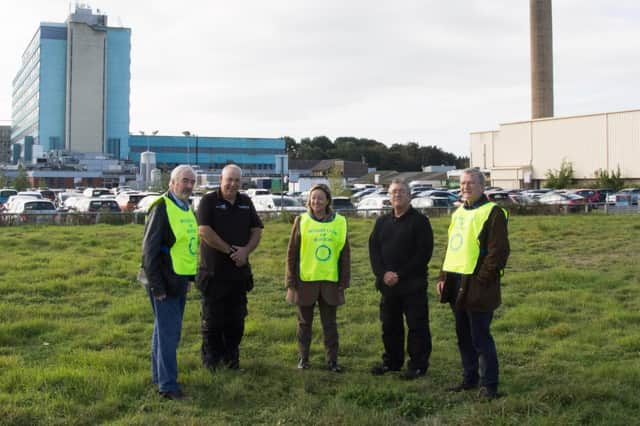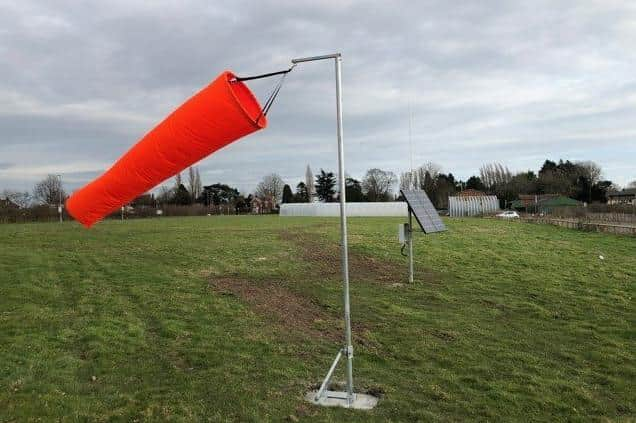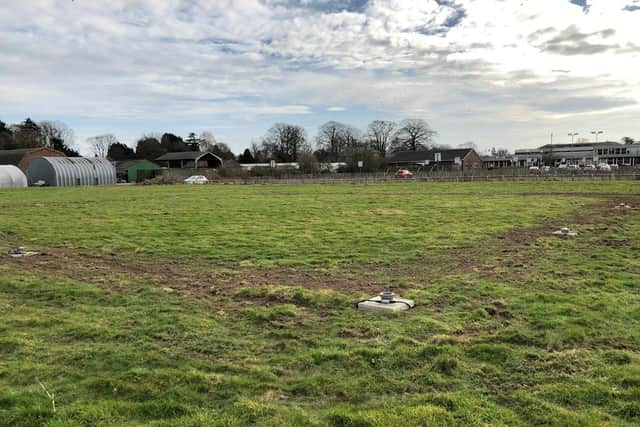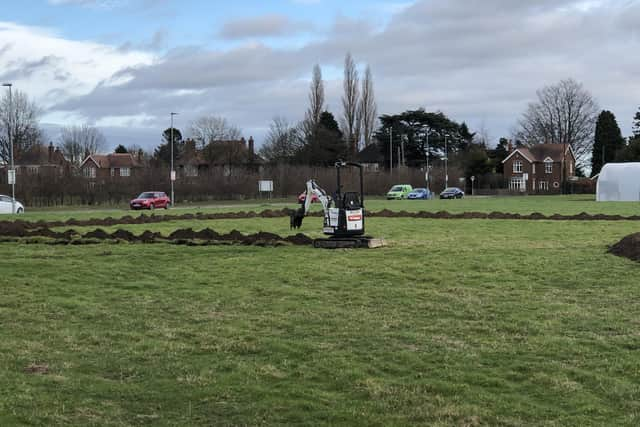Lift off for life-saving helipad lights project at Pilgrim Hospital


The works to introduce 13 lights at the grass helipad are complete – enabling the Air Ambulance to land and take off from there during darkness hours.
This development means the Lincs and Notts Air Ambulance (LNAA) can soon transfer more patients who need urgent and critical care to and from the hospital.
Advertisement
Hide AdAdvertisement
Hide AdThe Rotary Club of Boston came up with the ‘Let There Be Light’ campaign back in October last year.


Geoff Day from the Rotary Club of Boston said: “The public responded magnificently to the appeal, as did other Rotary Clubs in South and mid-Lincolnshire.
“This was a community effort for a community benefiting service.
The Rotary Club of Boston, in co-operation with other Rotary Clubs in mid and South Lincolnshire, set out to raise the £10,000 necessary to install the aprroved helipad lights. But they successfully smashed that target with £14,904 raised for the project.
Advertisement
Hide AdAdvertisement
Hide AdMr Day said: “The additional funds raised will be used to fund a much-needed blood warmer for the helicopter.”


The club says the lights are ‘state-of-the-art dual visual lights’ with infra-red for when the crews need to land using night vision goggles.
Mr Day added: “After being switched on they automatically go out after 20 minutes.
“An illuminated wind sock has also been erected to replace the existing un-lit wind sock. The entire installation is eco-friendly, being solar-powered and requiring no mains electricity.”
Advertisement
Hide AdAdvertisement
Hide AdChief pilot of the LNAA, Captain Llewis Ingamells, who was born at Pilgrim Hospital himself, said: “It’s great to see the lights being installed as it gives us more options for our patients when we need to use Boston Pilgrim Hospital.


“We’re so grateful to the people and groups who make projects like this possible and supports us in being able to deliver the best service we can to our communities.”
Speaking to the Standard previously, Capt Ingamells explained that despite being able to land at other sites using night vision goggles, ground lights must be in place at hospital sites in order to land. This meant that Pilgrim Hospital’s helipad previously closed to all air ambulances once it became dark.
“By land, ambulance patients in the Boston area are approximately an hour and 20 minutes away from Queens Medical Centre in Nottingham, the nearest Major Trauma Centre,” he said.
Advertisement
Hide AdAdvertisement
Hide Ad“While we would, where possible, take a patient directly to an MTC, sometimes patients will be taken to the closet Trauma Unit (Pilgrim) before being transferred on to an MTC or a specialist hospital such as major burns at Birmingham.
“Having the option to operate in the hours of darkness from Pilgrim means that LNAA are in a position to help assist our partner EMAS in such transfers if requested.”